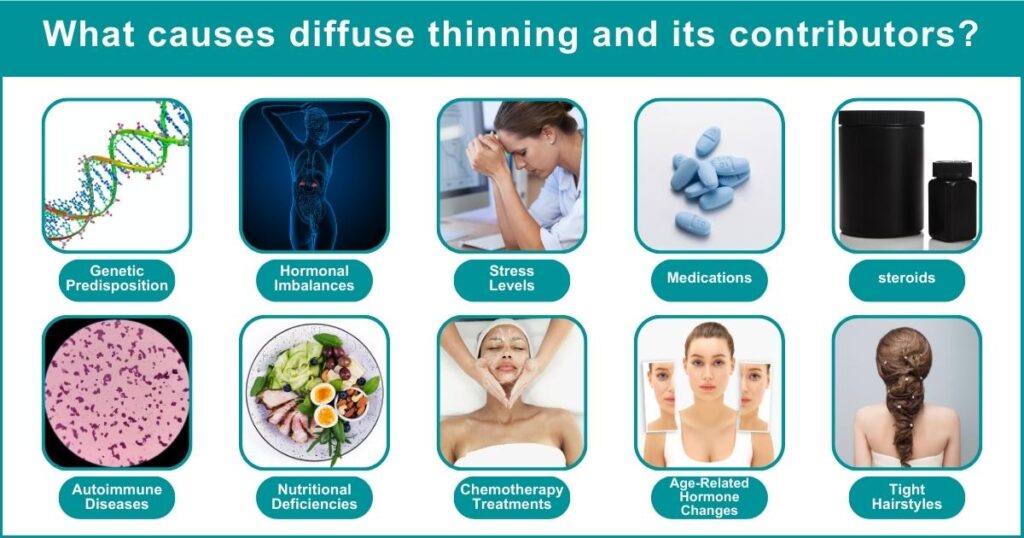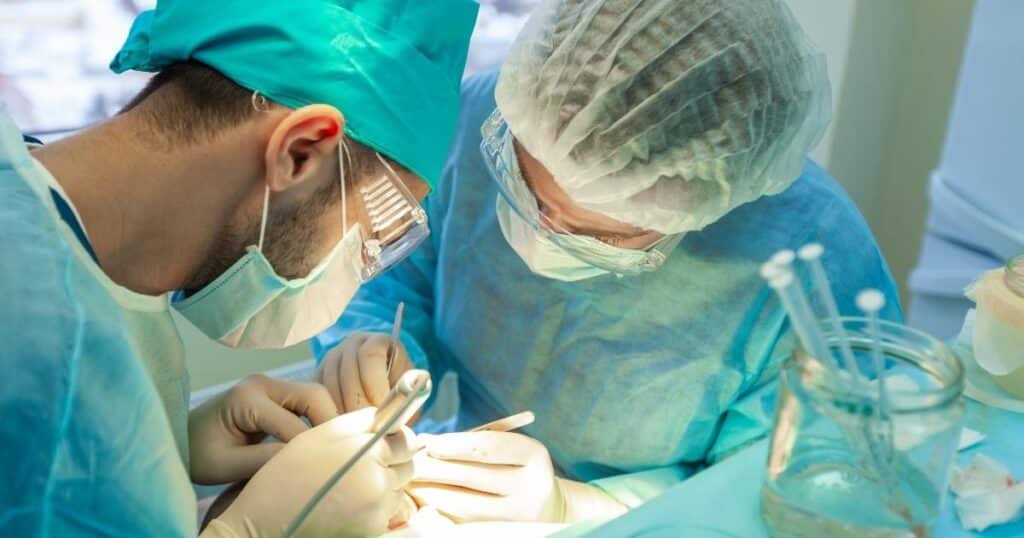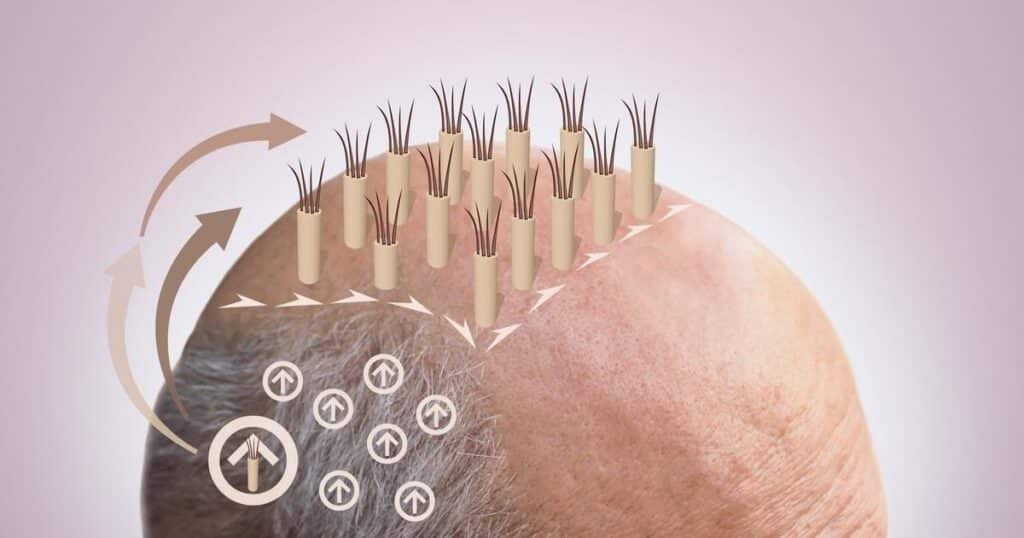Hair loss may significantly impact an individual’s self-confidence, leading to a desire for practical solutions. The advanced Follicular Unit Extraction (FUE) hair transplant surgery technique may address diffuse thinning, a prevalent condition affecting both males and females baldness. This comprehensive guide explores the details of FUE, elucidating its emergence as a revolutionary development in hair restoration.
What is Diffuse Thinning?
Diffuse alopecia, or patterned hair loss, is a type of hair thinning that affects both men and women. It is characterized by an overall thinning of the scalp rather than localized bald spots. Several factors contribute to diffuse thinning, such as hereditary elements, hormonal imbalances, stress, certain drugs, and medical issues.
Understanding Diffuse Thinning: What’s It All About?

Diffuse thinning is a specific type of hair loss that affects individuals without a distinct pattern. Unlike patterned baldness, where the loss occurs in particular areas, diffuse thinning reduces hair density across the scalp. This condition can be quite perplexing for those who experience it, as it may occur without clear reasons or warning. Here’s what you need to know:
| Aspect | Details |
| Definition | Diffuse thinning refers to thinning hair evenly across the scalp rather than in isolated spots. |
| Causes | Nutritional deficiencies, Hormonal imbalances, Stress and anxiety, Certain medications, Genetic factors |
| Symptoms | Generalized hair thinning, Increased hair shedding, Reduced hair volume |
| Diagnosis | Clinical examination, Detailed medical history, Specific laboratory tests |
| Treatment Options | Targeting underlying causes, Implementing a proper nutritional regime, FUE hair transplant surgery |
Can You Get a Hair Transplant on Thinning Hair?

The answer to this question is typically yes, and many individuals with thinning hair turn to hair transplant procedures as a solution. Here are the key points:
- Eligibility: Only some people with thinning hair are ideal candidates; factors like age, hair type, and overall health must be considered.
- Methods: Standard methods for Follicular Unit Extraction (FUE) and Follicular Unit Transplantation (FUT) are used.
- Preparation: Evaluation by a qualified surgeon to assess the degree of thinning and the best approach.
- Outcome: Successful transplants can give the hair a fuller, more even appearance.
- Considerations: Transplants may not stop further thinning; ongoing care and possibly additional treatments may be necessary.
Can I Get a Hair Transplant if My Hair Is Naturally Thin?
Naturally, thin hair may also be addressed with a hair transplant, but there are specific considerations. Here’s what to keep in mind:
- Assessment: Thorough evaluation by a hair restoration specialist to determine if a transplant suits your specific hair type.
- Expectations: Setting realistic expectations is crucial as naturally thin hair might limit the final density achieved.
- Procedure Selection: Different techniques may be recommended depending on the type and pattern of thinning.
- Aftercare: Specific aftercare may be required for those with naturally thin hair to maintain the results.
Alternative Options: Non-surgical interventions may be suggested as more appropriate solutions for natural thinness.
Can I Get a Hair Transplant if My Hair Is Naturally Thin?
Naturally, thin hair may also be addressed with a hair transplant, but there are specific considerations. Here’s what to keep in mind:
- Assessment: Thorough evaluation by a hair restoration specialist to determine if a transplant suits your specific hair type.
- Expectations: Setting realistic expectations is crucial as naturally thin hair might limit the final density achieved.
- Procedure Selection: Different techniques may be recommended depending on the type and pattern of thinning.
- Aftercare: Specific aftercare may be required for those with naturally thin hair to maintain the results.
- Alternative Options: Non-surgical interventions may be suggested as more appropriate solutions for natural thinness.
When Does Transplanted Hair Thicken?
The thickening of transplanted hair is a gradual process, and several factors influence it:
- Initial Shedding: Transplanted hair often sheds within the first few weeks after surgery.
- Growth Phase: New hair grows around 3-4 months post-operation.
- Thickening Process: Hair gradually thickens, usually reaching total density at around 12-18 months.
- Influencing Factors: Individual growth rate, surgeon’s skill, and post-operative care can affect the thickening timeline.
Does Transplanted Hair Thin Over Time?
The transplanted hair may experience some changes over time, but thinning is typically not a significant issue:
- Source of Hair: Transplanted hair from resistant areas usually retains characteristics and does not thin like other scalp hair.
- Aging Effect: General aging may affect hair density, including transplanted hair.
- Health and Lifestyle: Underlying health conditions or poor lifestyle choices can influence hair’s long-term thickness.
- Maintenance: Proper ongoing care is vital to maintaining thickness.
Does Hair Loss Continue After a Hair Transplant?

The continuity of hair loss after an FUE hair transplant procedure is an essential consideration:
- Transplanted Hair: Generally remains stable since it’s typically taken from areas resistant to thinning.
- Surrounding Hair: The non-transplanted hair may continue to thin or recede, contrasting the transplanted areas.
- Preventive Measures: Medications or treatments like Minoxidil or Finasteride can slow down further hair loss.
- Future Procedures: Additional transplants may be necessary to address ongoing natural hair loss.
Individual Factors: Genetic predisposition, age, and overall health will influence continued hair loss.
Age Groups Affected by Diffuse Thinning:
| Age Group | Percentage of Population Affected by Diffuse Thinning | Remarks |
| 18-24 | 5% | Often related to stress or poor diet |
| 25-34 | 10% | Common onset age for genetic factors |
| 35-44 | 15% | Increasingly common with age |
| 45-54 | 20% | May be linked to hormonal changes |
| 55-64 | 25% | Often seen with underlying health issues |
| 65 and above | 30% | Prevalence increases with age |
Understanding FUE Hair Transplants for Diffuse Thinning
Follicular Unit Extraction (FUE) hair transplants have emerged as a promising solution for people grappling with diffuse thinning. This procedure aims to restore the natural look of hair permanently, eliminating the need for continuous treatments or medications.
The Procedure of FUE Hair Transplants
In FUE hair transplant, healthy hair follicles are extracted from the donor areas of the scalp and transplanted into areas with less hair density or baldness. This meticulous process has multiple benefits, including minimal scarring, speedy recovery, and the absence of linear incisions on the scalp.
What Should I Do if My Hair is Thin After a Hair Transplant?

Finding that your hair is still thin after a transplant can be disappointing, but there are several steps you can take:
- Consult Your Surgeon: Schedule a follow-up appointment to discuss concerns and possible reasons for the thin appearance.
- Evaluate Growth Phase: Remember that total thickness often takes 12-18 months.
- Consider Additional Treatments: Options like laser therapy or medications might be recommended to enhance growth.
- Assess Expectations: Review pre-surgery discussions and understand if expectations are realistic.
- Potential Re-Transplant: Additional transplant surgery might be suggested in rare cases.
Which Hair Transplant Techniques Can Be Used for Diffuse Thinning Hair Transplant?
Diffuse thinning presents unique challenges, but there are techniques available to address this type of hair loss:
| Technique | Description |
| Follicular Unit Extraction (FUE) | – Minimally invasive – Suitable for mild to moderate diffuse thinning – Individual follicle extraction allows for targeted placement |
| Follicular Unit Transplantation (FUT) | – Often used for more significant thinning – Involves transplanting a strip of hair-bearing skin |
| Scalp Reduction | – In cases of extensive thinning, reducing the area of thinning scalp can be an option – Often combined with other transplant techniques |
| Combination Therapies | – Utilising a combination of surgical and non-surgical treatments – Tailored to individual needs and extent of thinning |
How Many Grafts Do I Need for a Diffuse Thinning Hair Transplant?
The number of grafts you need for a diffuse thinning hair transplant will depend on the severity of your hair loss and the amount of donor’s hair you have available. You will need between 2,000 and 6,000 grafts for a diffuse thinning hair transplant.
Here are some factors that will affect the number of grafts you need:
- The severity of your hair loss: The more severe your hair loss, the more grafts you need.
- The amount of donor hair you have available: If you have a lot of donor hair available, you may get away with using fewer grafts. However, if you have limited donor hair, you may need to use more grafts.
- Your desired hair density: The more dense you want your hair to be, the more grafts you will need.
How Much Does Diffuse Thinning Hair Transplant Cost in LA?
The cost of a diffuse thinning hair transplant in Los Angeles (LA) can vary depending on factors, including the surgeon’s fees, the number of grafts required, and the type of procedure used. In general, hair transplant costs in LA range from $8,000 to $15,000, with an average cost of around $10,000.
| Factors | Additional Costs |
| Surgeon’s fees | $500 – $3,000 per graft |
| Number of grafts required | Varies depending on the severity of hair loss |
| Type of procedure | FUE: $3,000 – $5,000 |
| Anesthesia | $1,000 – $2,000 |
| Medications | $500 – $1,000 |
| Follow-up care | $500 – $1,000 |
Everyone wants to look their best, and having thick, healthy hair plays a big part in that. FUE hair transplant can fill in thinning hair and boost confidence. You can start a journey to regain fuller hair with the right info and a good doctor. Say goodbye to thin spots and hello to a fresh startg.
Ready to Take the First Step Toward a New You? Book a consultation with our expert team at Hair Transplants Los Angeles and take control of your hair and life today!
FAQs about Diffuse Thinning with FUE Hair Transplant
Diffuse thinning is uniform hair thinning across the scalp without a specific pattern, affecting both genders.
FUE involves extracting individual hair follicles from a donor site and implanting them into the thinning areas, promoting natural growth.
The procedure is generally performed under local anesthesia, minimizing pain. Some discomfort may occur during recovery.
Recovery varies, but most patients can return to normal activities within a week. Complete healing takes several months.
The cost varies based on location, surgeon’s experience, and extent of treatment. Consultation with a surgeon is recommended for an accurate estimate.
While FUE provides lasting results, maintenance, and care are essential. Aging and genetics may still influence future hair loss.
To ensure your ease of mind, you can view our customer recommendations HERE. Furthermore, you can also see our Google reviews and Yelp reviews. We can’t wait to help you start restoring your lost hair.
